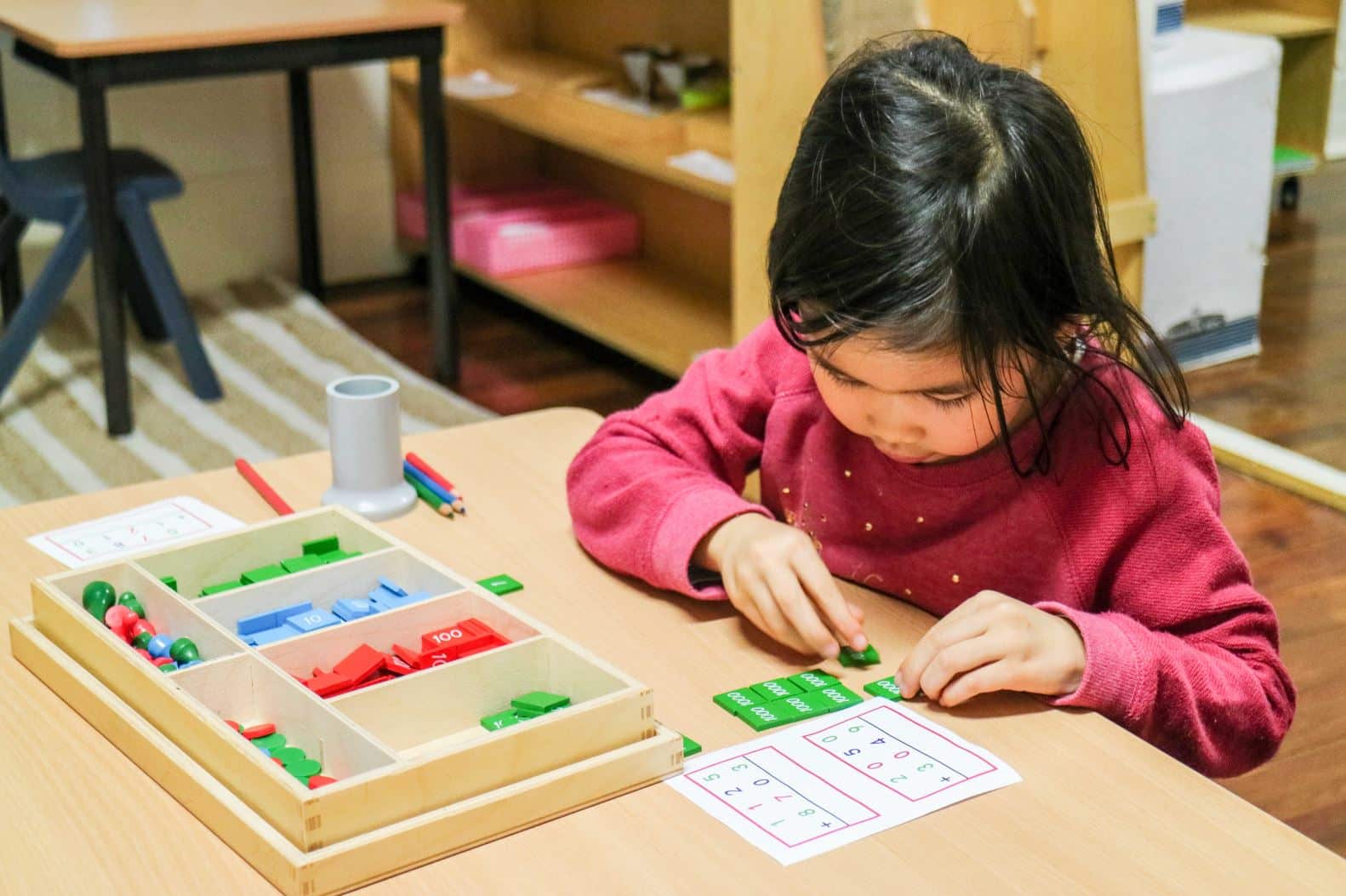
The human mind is by nature mathematical. From birth we learn the meaning of phrases such as “how old are you?” and “we’re leaving in one hour.” The capabilities of the mathematics mind are present in the mind of the child. An infant is able to understand the difference between one and many. A toddler is able to sensorially distinguish between small and large quantities. A preschooler is able to identify the symbols for numbers and begin to physically quantify ‘how many’ that symbol means. Numbers themselves cannot be easily defined, but come to be understood from experiences with concrete objects that eventually become abstract ideas.
Doctor Maria Montessori believed that children come to absorb mathematical concepts naturally. She recognised that there were specific sensitive periods in a child’s development whereby the acquisition of mathematical concepts were eagerly explored through repetition of activities with concrete, scientifically developed, didactic materials. Doctor Maria Montessori designed concrete mathematical materials to represent all levels of quantities and mathematical concepts after she observed that children who are interested in counting, like to move items as they enumerate them. In the Montessori learning environment, the children not only sees and learns the symbol for a number, they hold the quantity in their hand. For most children, the sensitive development period for learning mathematical concepts is between the age of four and six years.
Through the Montessori Curriculum areas of Practical Life, Sensorial and Mathematics, children experience the concepts of order, measurement, calculations, numeric symbol recognition, counting, and exactness. There are six key skill areas within the Montessori Mathematics Curriculum, including: numeration (numbers 1 – 10), the decimal system, the tradition names, the arithmetic tablets, and the passage to abstraction and fraction. In order to help each child achieve their full mathematical potential, it is the role of the Montessori teacher to set up and organise the materials in a way that is progressive and sequential. Young Montessori students learn about precision and exactness by measuring how many water drop it takes to fill a vessel (i.e. ice cube tray). These Practical Life activities not only help children to gain independence, but also provide indirect foundations for higher level maths skills.
As children develop in the Montessori learning environment, they become ready to encounter more concrete mathematics materials that explore abstract thought, beginning with quantity. Quantity is first presented to the child in the form of variables to avoid confusion. The Montessori teacher will use a material, such as the Number Rods, in order to introduce quantities from one to ten. The red and blue partitions of the Number Rods make the quantity countable. The number rods are then given a name and a number. As the child works with the rods, they begin to realise that the first rod is the unit of measurement, with which the other rods can be measured. In this way, Montessori students learn about the mathematics through their hands.
As Doctor Maria Montessori said: “This system in which a child is constantly moving objects with his hands and actively exercising his senses, also takes into account a child’s special aptitude for mathematics. When they leave the material, the children very easily reach the point where they wish to write out the operation. They thus carry out an abstract mental operation and acquire a kind of natural and spontaneous inclination for mental calculation.“